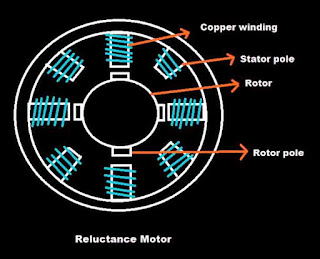1 Answer
Answer :
Reluctance motor
•Reluctance is opposition to magnetic flux.
•Reluctance is analogous to electric resistance.
•Reluctance motor does not have any winding on rotor.
•Rotor consists of notches.
•It can rotate in clockwise and anticlockwise direction .
•Reluctance motor is some what similar to brushed DC motor.
•Poles of reluctance motor is type of non permanent magnet.
•Reluctance motor can deliver a high power density.
•Stator poles of a reluctance motor are more than the rotor poles.
•All the poles of reluctance motor are wound with copper winding.
•We can control it through microcontroller.
•Reluctance motor is use in hard disk drive motor, Tape Recorder, Clock Timer etc.
•The torque which is required for rotation of rotor is generated through magnetic reluctance so it called reluctance motor.
